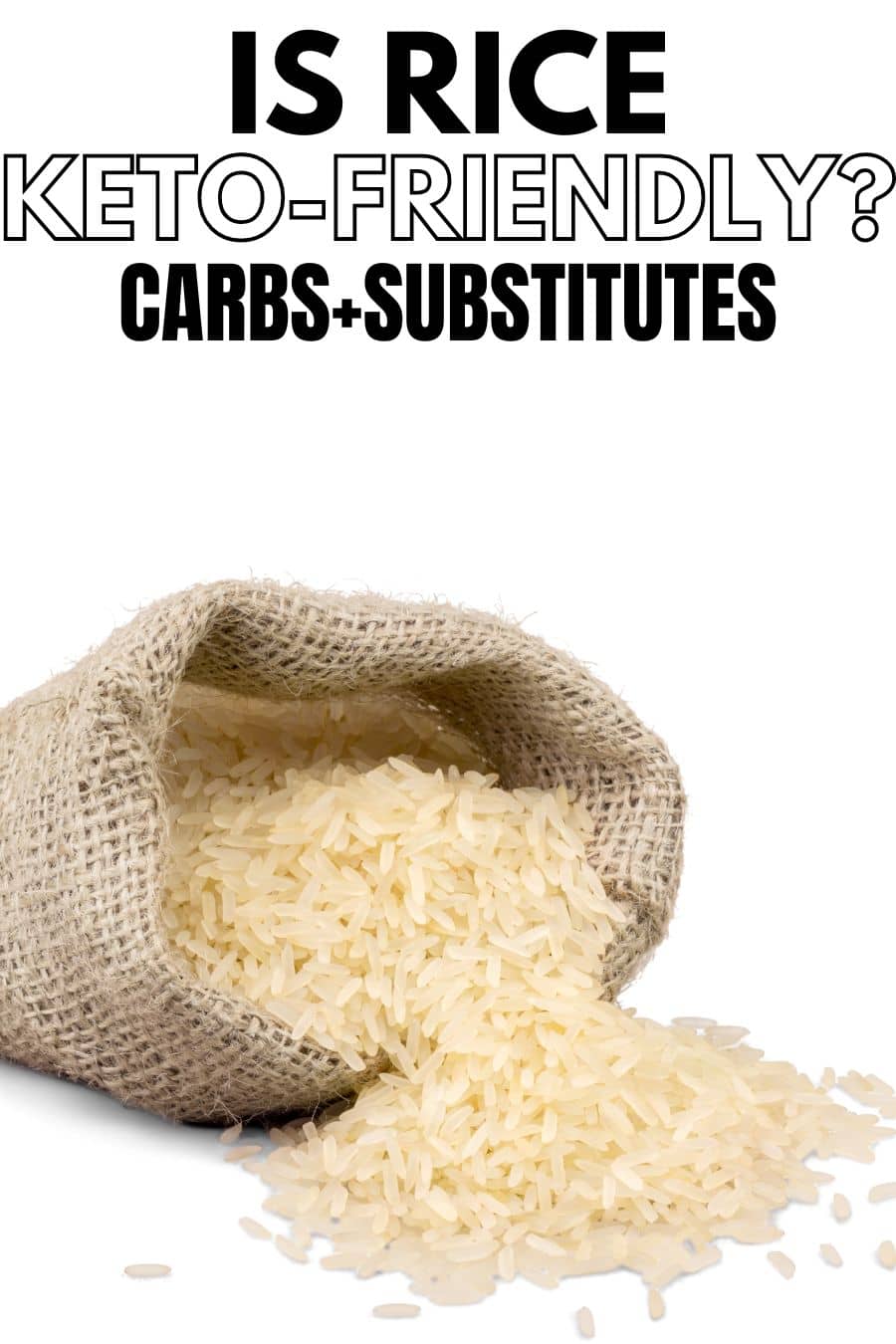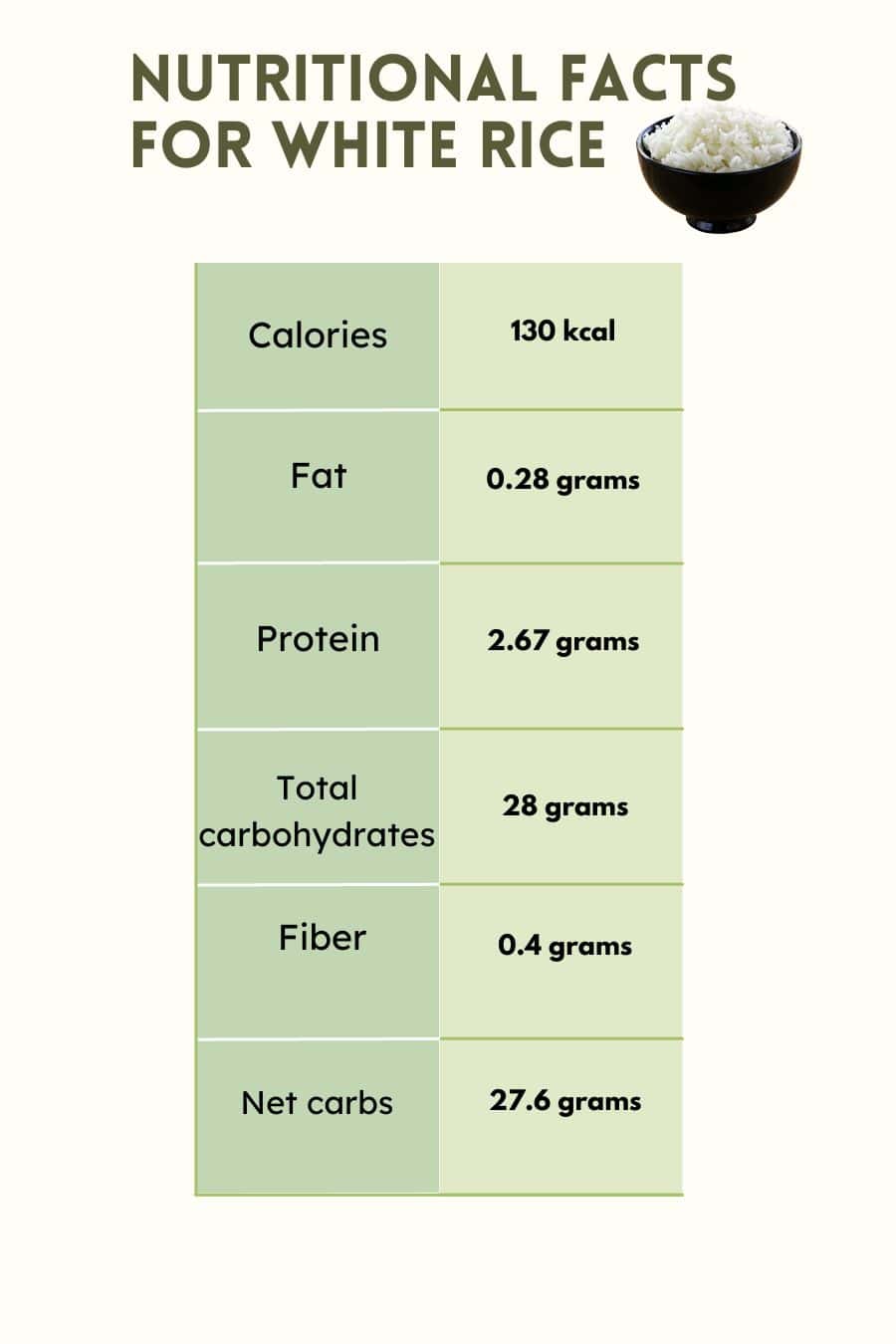Rice is a staple food for more than half the world’s population because it is an easy-to-find, inexpensive ingredient that can be included in many recipes. In addition, there are a lot of varieties of different shapes, sizes, textures, flavors, and colors.

What Is A Keto-Diet?
The ketogenic diet is a low-carb, high-fat diet. Carbohydrate consumption is drastically reduced, and fat consumption takes its place. A decrease in carbs causes ketosis, a metabolic state produced by a drop in carbs.
When carbohydrate levels drop, the body runs out of fuel to burn for energy (glucose is the primary fuel source), so it breaks down fats and proteins for energy, which can cause you to lose weight.
This is known as ketosis, resulting in a significant drop in blood sugar and insulin levels and a rise in ketones, which are readily available to the brain due to protein catabolism.
What Is Rice?
Rice, scientifically called Oryza sativa, is a type of grain popular on all continents, is the staple food in Asia, and has over 40,000 varieties of different shapes, sizes, textures, flavors, and colors.
Is Rice Keto-Friendly? Can you eat rice on a keto diet?
Most types of rice contain about 45 grams of carbohydrates, which is more than the recommended daily intake for keto, which is 20-30 grams. So the answer is clear, rice has nothing to do with a keto diet. But don’t be sad because there are other, much healthier, and more delicious alternatives.
If you start a ketogenic diet and try to get into ketosis, you should avoid rice because foods high in carbohydrates can lead to higher insulin levels and can disrupt your progress. And if you have too many carbs, your body will start using them for energy.
Nutritional Facts For White Rice
Calories: 130 kcal
Fat: 0.28 grams
Protein: 2.67 grams
Total carbohydrates: 28 grams
Fiber: 0.4 grams
Net carbohydrates: 27.6 grams

Different Types of Rice
1. Brown Rice
- Nutritional Facts (per 100g):
- Calories: 111 kcal
- Carbohydrates: 23.5g
- Protein: 2.1g
- Fat: 0.9g
- Fiber: 1.8g
Brown rice is a whole grain rice that retains the bran and germ layers, making it more nutritious than white rice. It has a nuttier flavor and is a good source of fiber, vitamins, and minerals.
2. Wild Rice
- Nutritional Facts (per 100g):
- Calories: 101 kcal
- Carbohydrates: 21.3g
- Protein: 4.0g
- Fat: 0.3g
- Fiber: 1.8g
Wild rice is not a true rice but the seed of an aquatic grass. It is more nutritious than white rice and has a distinct, earthy flavor. It is higher in protein and fiber.
3. Basmati Rice
- Nutritional Facts (per 100g):
- Calories: 150 kcal
- Carbohydrates: 35g
- Protein: 3.5g
- Fat: 0.6g
- Fiber: 1.6g
Basmati rice is a long-grain rice known for its aromatic qualities and slightly nutty flavor. It has a lower glycemic index than white rice and is often preferred in Indian and Middle Eastern cuisines.
4. Jasmine Rice
- Nutritional Facts (per 100g):
- Calories: 130 kcal
- Carbohydrates: 28.2g
- Protein: 2.7g
- Fat: 0.2g
- Fiber: 0.3g
Jasmine rice is another aromatic long-grain rice with a floral aroma. It has a softer and stickier texture, making it popular in Thai and Southeast Asian dishes.
5. Arborio Rice
- Nutritional Facts (per 100g):
- Calories: 360 kcal
- Carbohydrates: 77g
- Protein: 7g
- Fat: 1g
- Fiber: 1.4g
Arborio rice is a short-grain rice known for its high starch content. It is often used to make creamy risotto because it absorbs liquids and creates a creamy texture.
6. Black Rice (Forbidden Rice)
- Nutritional Facts (per 100g):
- Calories: 340 kcal
- Carbohydrates: 76g
- Protein: 8.5g
- Fat: 2.2g
- Fiber: 4.9g
Black rice, also known as “forbidden rice,” is a whole grain rice with a dark, purple-black color. It is rich in antioxidants, fiber, and essential nutrients.
Best Alternatives For Rice
- Cauliflower Rice – It’s just cauliflower pulsed in a food processor until it produces rice-sized granules. It is extremely delicious and perfect as a garnish for any food.
- Shirataki Rice – It’s a unique keto-friendly rice substitute. It’s created from flour obtained from the root of the konnyaku plant. What makes it so miraculous? Shirataki rice has only one carb per serving. Furthermore, because this rice contains soluble fiber, it may aid digestion.
- Konjac Rice
- Broccoli Rice – Broccoli is another low-carb option for your regular rice recipe. Pulse the broccoli until it’s as fine as rice grains in a food processor to make broccoli rice. Cooked broccoli has roughly 6 grams of net carbohydrates and 30 milligrams of calcium per cup, making it a wonderful dairy-free calcium source.
- Zucchini Rice
- Cabbage Rice
Conclusion
Carbs in rice are high; therefore, rice is not keto friendly. However, you can choose one of our substitutes to keep carbs low.
